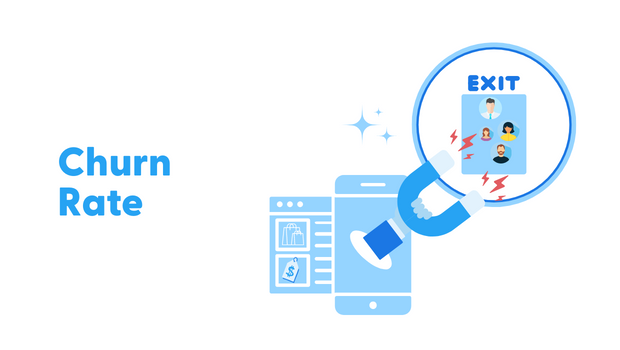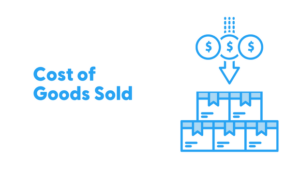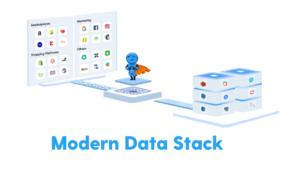Churn rate is a metric that measures the rate at which customers leave a company or stop using a product or service. It is often expressed as a percentage of the total number of customers or subscribers at the beginning of a period. Depending on the context, churn rate can also mean customer attrition, customer turnover, and subscriber churn rates.
Measuring and understanding churn rate is important because it can provide valuable insights into the health and growth of a business. A high churn rate can indicate a problem with the product or service, customer service, or pricing, and can also signal that a company is not effectively retaining its customers. On the other hand, a low churn rate can indicate that a company is effectively retaining its customers and that the product or service is meeting their needs. A company can improve customer retention and drive growth by understanding and addressing the factors contributing to churn.
Types & How to Calculate Churn Rate
There are several different types of churn rate, including:
- Subscriber churn rate: This measures the number of customers who stop using a specific product or service.
- Formula: (Number of customers who stopped using the product or service / Total number of customers who were using the product or service) x 100
- For example, if 100 customers were using a subscription service and 10 of them cancel their subscription, the product or service churn rate would be 10%.
- Customer churn rate: This measures the number of customers who leave a company altogether.
- Formula: (Number of customers who left / Total number of customers) x 100
- For example, if a company had 1,000 customers and 100 of them left, the customer churn rate would be 10%.
- Revenue churn rate: This measures the amount of revenue lost due to customer churn.
- Formula: (Revenue lost due to churn / Total revenue) x 100
- For example, if a company had $100,000 in revenue and lost $10,000 due to customer churn, the revenue churn rate would be 10%.
- Employee Churn Rate: This measures the rate at which employees leave a company. It can also be referred as “turnover rate” or “attrition rate”.
- Formula: (Number of employees who left / Average number of employees) x 100.
- For example, if a company had 100 employees and 10 of them left, the employee churn rate would be 10%.
In all types of churn rate, a higher number or percentage indicates a greater level of customer dissatisfaction and a need for improvement in the product, service, or customer retention strategy.
It’s important to note that, in some cases, a business may have a high churn rate but still be profitable because it is gaining new customers faster. Therefore, tracking and analyzing churn rate in conjunction with other metrics such as customer acquisition rate is essential.
Also, read:
Causes of High Churn Rate
Depending on the context, there are different causes for a high churn rate, including:
| Type | Causes |
| Subscriber Churn |
|
| Customer Churn |
|
| Revenue Churn |
|
| Employee Churn |
|
Impact of High Churn Rate
High churn rate in any form can have a significant negative impact on a business and it’s important to take steps to understand and address the root causes of churn in order to minimize it.
| Type | Impact of High Churn Rate |
| Subscriber | 1. Loss of recurring revenue from monthly or annual subscriptions
2. Decrease in overall customer base 3. Difficulty in forecasting future revenue 4. Increased marketing and acquisition costs to replace lost subscribers |
| Customer | 1. Loss of revenue from one-time sales or purchases
2. Decrease in customer lifetime value 3. Difficulty in predicting future sales 4. Increased marketing and acquisition costs to replace lost customers |
| Revenue | 1. Decrease in overall revenue
2. Difficulty in forecasting future revenue 3. Decrease in profitability 4. Increase in costs to replace lost revenue |
| Employee | 1. Decrease in productivity
2. Increase in recruitment and training costs 3. Loss of institutional knowledge and expertise 4. Negative impact on employee morale and engagement |
Strategies for Reducing Churn Rate
Depending on the context, businesses can deploy different strategies to reduce high churn rate, such as:
| Type | Strategies to Reduce High Churn Rate |
| Subscriber | 1. Improve customer service and support.
2. Offer incentives for customer loyalty. 3. Regularly survey customers to identify and address any issues. 4. Monitor and respond to social media comments and reviews. 5. Personalize communication and promotions. |
| Customer | 1. Improve the customer onboarding process.
2. Regularly check in with customers to ensure they are satisfied. 3. Offer training and resources to help customers get the most out of your product or service. 4. Use data analysis to identify at-risk customers and intervene before they churn. 5. Implement a customer success program. |
| Revenue | 1. Increase upselling and cross-selling efforts.
2. Offer special promotions and discounts to high-value customers. 3. Implement a customer retention program. 4. Continuously improve your product or service. 5. Monitor and adjust pricing strategy. |
| Employee | 1. Develop and communicate a clear company culture and values. 2. Offer competitive compensation and benefits. 3. Invest in employee training and development. 4. Encourage open communication and feedback. 5. Recognize and reward good performance. |
Also, read:
What is a Good Churn Rate
A good churn rate is typically low, indicating that a company retains its customers or employees depending on the context. The churn rate considered “good” can vary depending on the industry and the specific business.
For example, a company with a high-priced product or service may have a higher churn rate than a company with a lower-priced product or service because customers may be more likely to switch to a competitor when they feel that they are not getting good value for their money. Here are a few examples of churn rates in different contexts:
Read more:
Customer Churn Rate Industry Averages:
| Industry | Good Churn Rate |
| Telecommunications | 1-2% per month |
| Subscription-based | 5-7% per month |
| eCommerce | 15-20% per year |
| SaaS (Software as a Service) | 5-10% per year |
Employee churn rate industry averages:
| Industry | Good Churn Rate |
| Technology | 15-20% per year |
| Healthcare | 10-15% per year |
| Retail | 20-30% per year |
| Manufacturing | 5-10% per year |
What Churn Rate Doesn’t Tell You
While churn rate can provide valuable information about customer loyalty and engagement, it does not provide a complete picture of a company’s overall health or performance.
For example, a high churn rate may indicate that customers are unsatisfied with a product or service, but it does not necessarily tell you why they are leaving. Additionally, a high churn rate does not necessarily mean that a company is not making money or that it is not growing.
A company with a high churn rate but a large customer base may still generate significant revenue while a company with a low churn rate but a small customer base may not generate much revenue.
Another example is if a company has a high churn rate, it does not necessarily mean that it is not providing good customer service or that its products or services are not of good quality. It could be a result of a lack of marketing or advertising efforts to retain customers, or it could be a result of poor pricing or packaging of the company’s products or services.
In summary, while churn rate is a valuable metric, it should be used in conjunction with other metrics, such as customer lifetime value, customer acquisition cost, and revenue growth, to provide a more comprehensive understanding of a company’s performance and customer engagement.
Read more:
Conclusion
In conclusion, churn rate is an important metric for businesses as it is a key indicator of customer satisfaction and growth. However, it is just one part of the larger picture of understanding your customers.
To truly gain insight into your customer base, it’s essential to have a robust data platform that can provide a comprehensive view. That’s where Saras comes in, as we can help you to gather and analyze the data you need to make informed decisions about your business. Contact Saras Analytics today if you’re ready to take your customer understanding to the next level.













